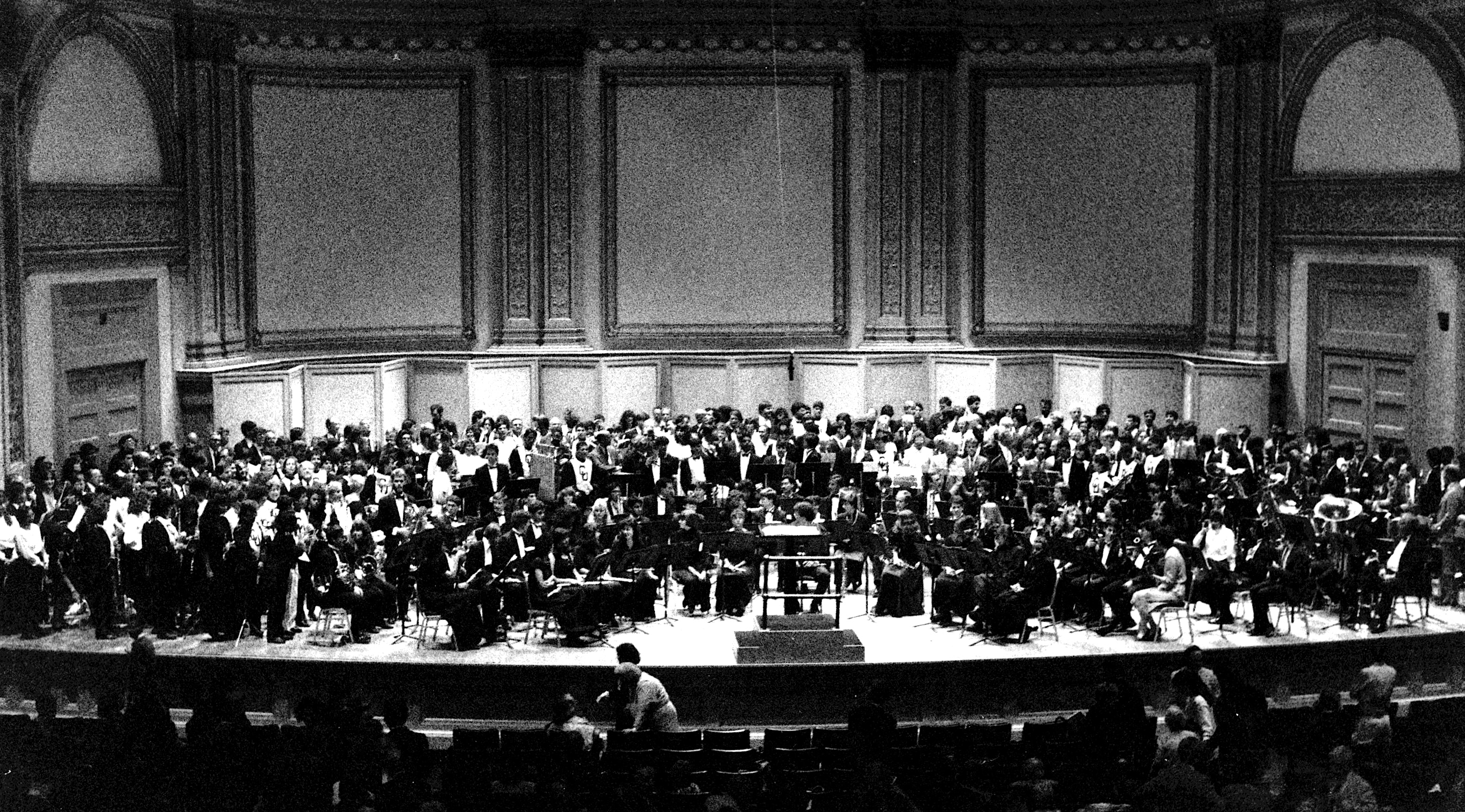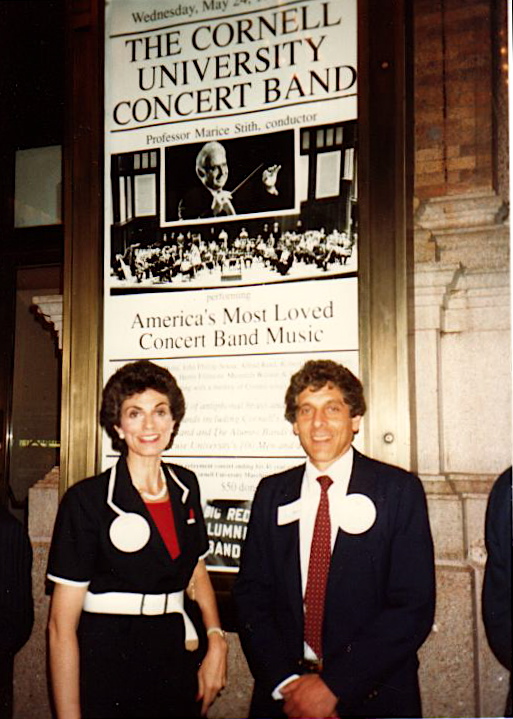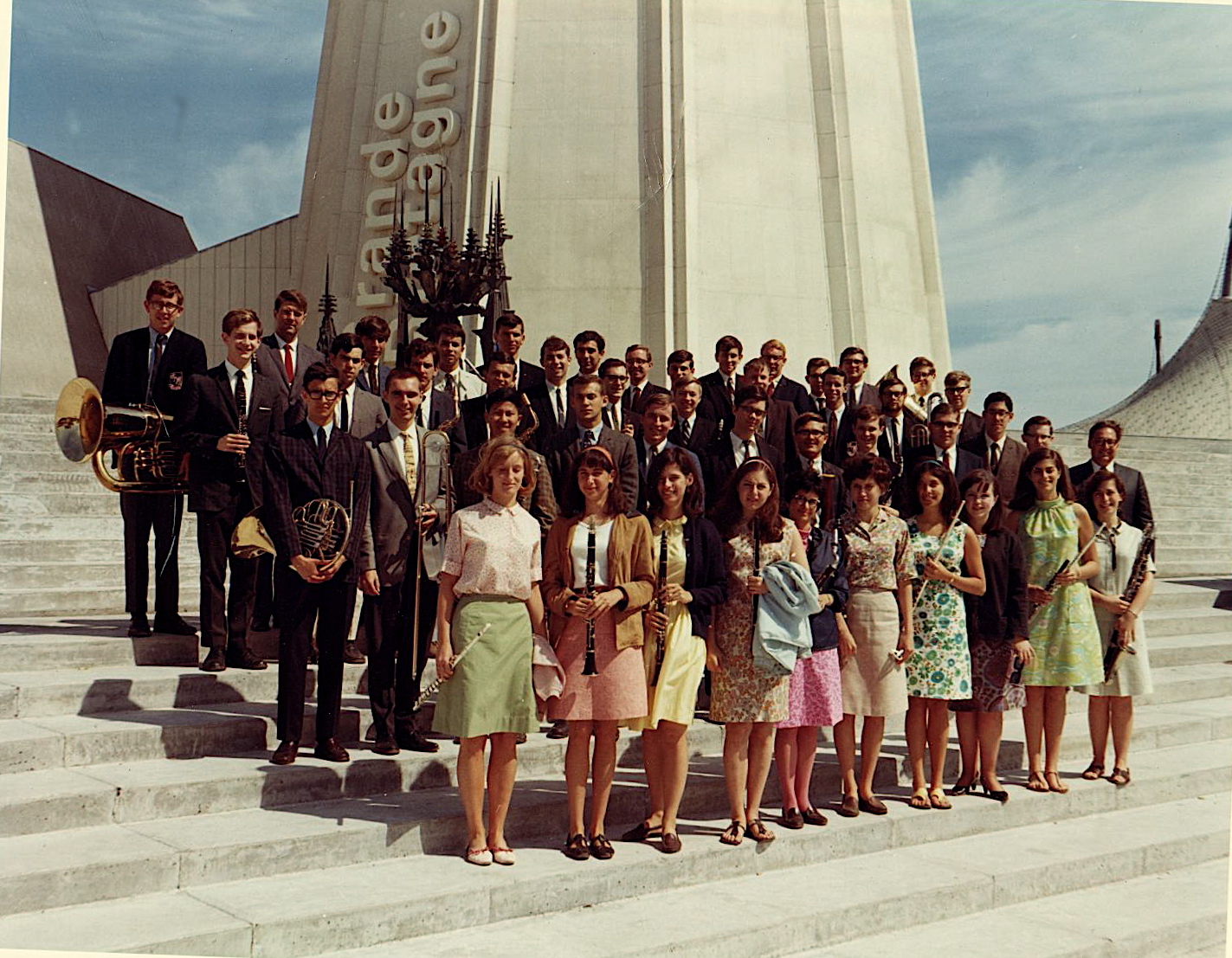
Before 1970, the marching band was entirely male. It had been founded in the 1890's as part of the Cornell Reserve Officers' Training Corps (ROTC) program, although its affiliation with the program ended in 1948. The first time women were allowed into the band was the 1970 season.
Marsha Eisen, a flute from 1967, was kind enough to send me some photos she had from her time in the Cornell Concert Band. Most of the women at Cornell who still wanted to play their instrument, as well as men who didn't want to join the marching band, joined this organization.
The concert band is not affiliated with the marching band, but I think this is a relevant part of our history as a band and as a section. As one of the sections populated mostly by women, the history of women in the band ought to be something that we keep alive.

Carnegie Hall, 1989. Professor Marice Stith was retiring and brought the Cornell Concert band to NYC for this concert. All alumni of the bands who they were able to contact were invited to join on stage for a few selections. They were sent music in advance and in the afternoon, prior to the concert, there was a rehearsal on stage. As you can see, the ensemble on stage was quite large. This was the year that Conductor Stith was retiring. He had come to Cornell during Marsha's years on campus so she played under his direction during his first year on campus as well as during his last year there.

The photo outside Carnegie Hall shows the publicity sign for the event. It is cut off on the top, but it says May 24, 1989. This is Larry Berger, '66 a clarinet player, with Marsha Eisen.

This is June of 1967 in Montreal at the World's Fair "Expo '67. It was the tradition in the 60's that the Concert Band played for graduation. Since exams were over at least a week in advance, the band always planned a trip for several days between the end of exams and graduation. They also gave concerts along the way. Often arrangements were made to perform a concert at the former high school of a current band member, if possible. After the concert they were given home hospitality and stayed overnight at the home of local hosts. When that was not possible, they stayed in motels. Their concert "dress" for the women was pastel and flowery prints (very 60's) for spring out-door concerts. The men wore jackets and ties. Professor Stith is in the second row all the way on the right. As you can see, there were very few women in this group. Marsha Eisen is the the tall person in green, with her flute and piccolo, second from the right.